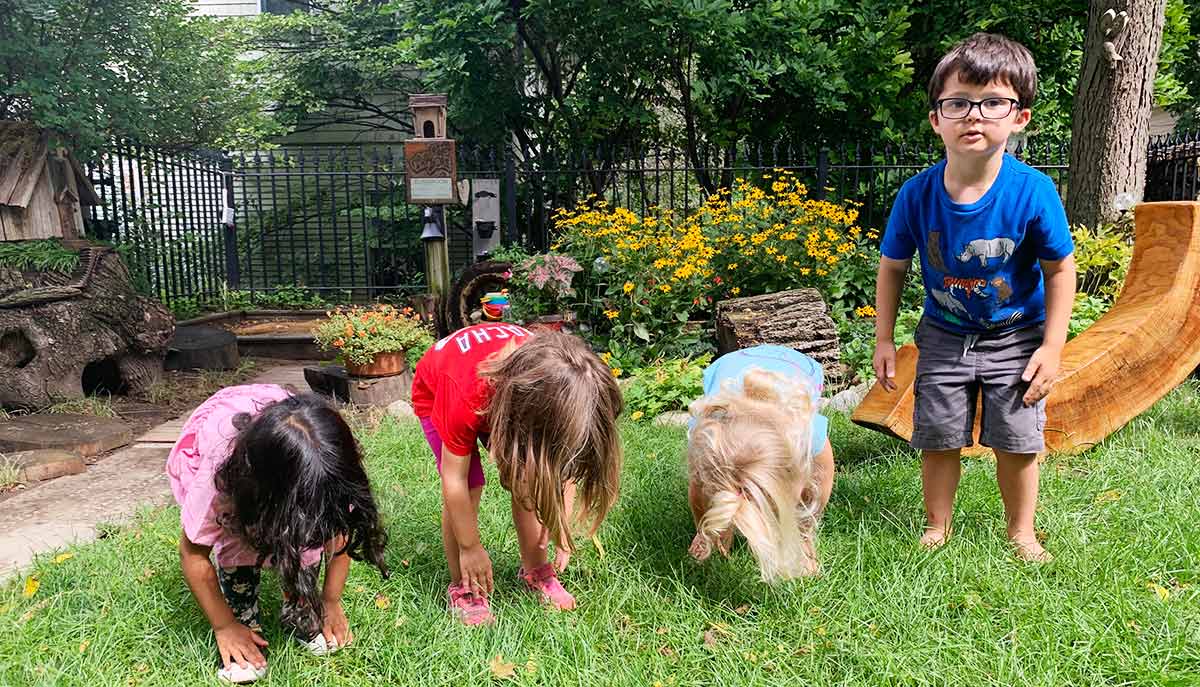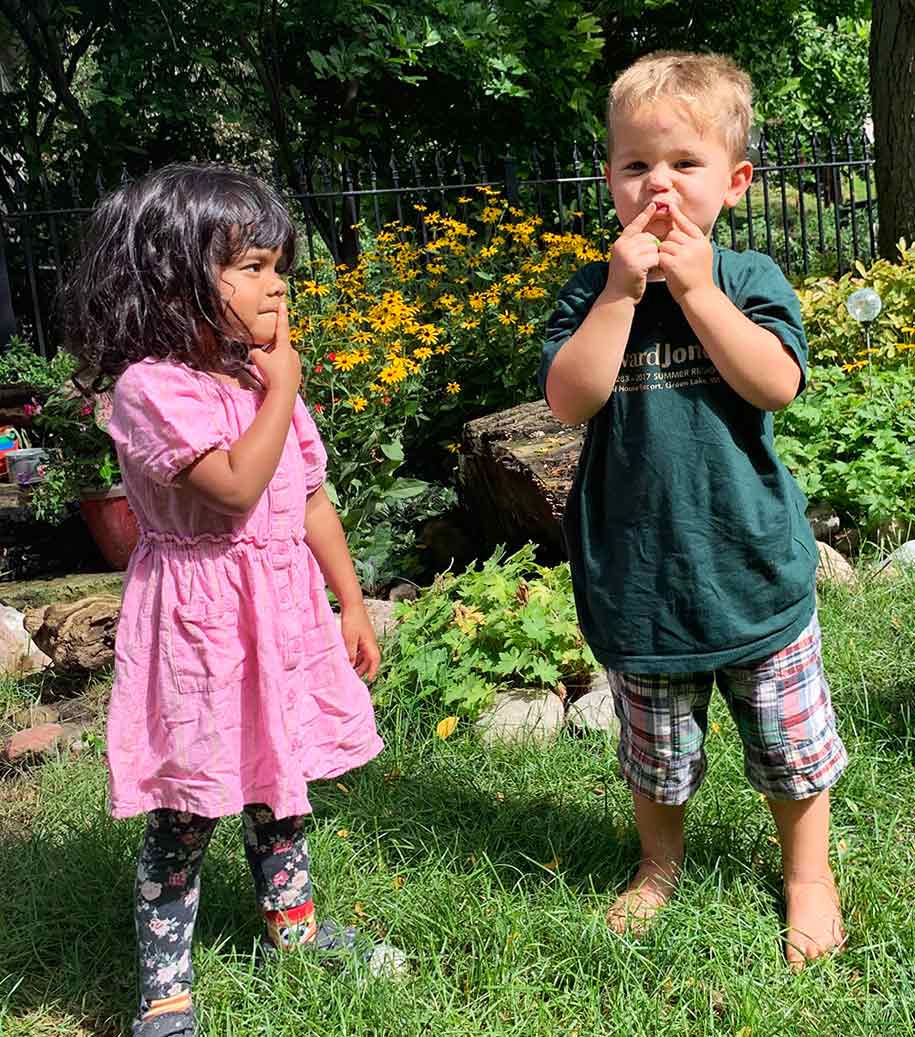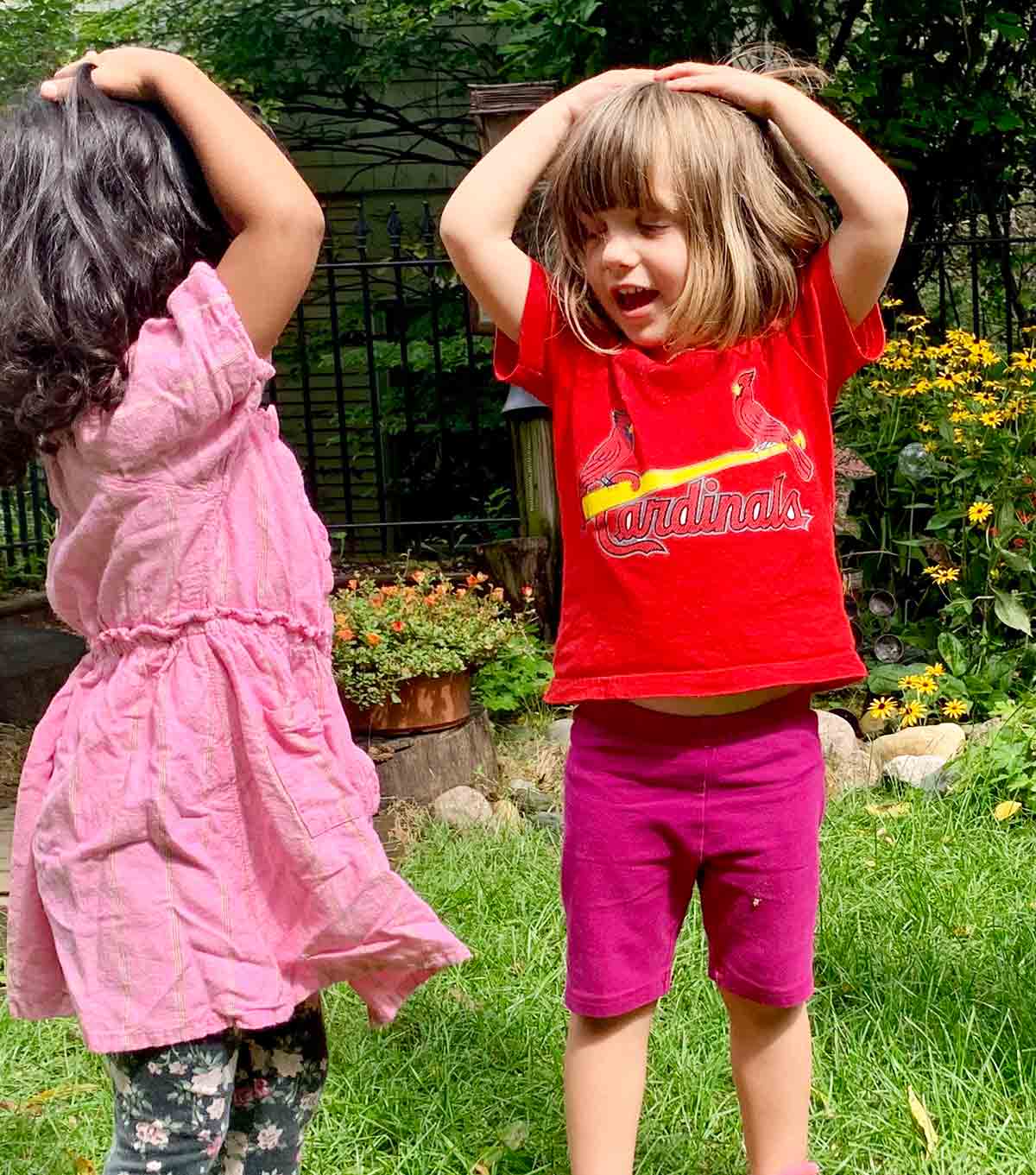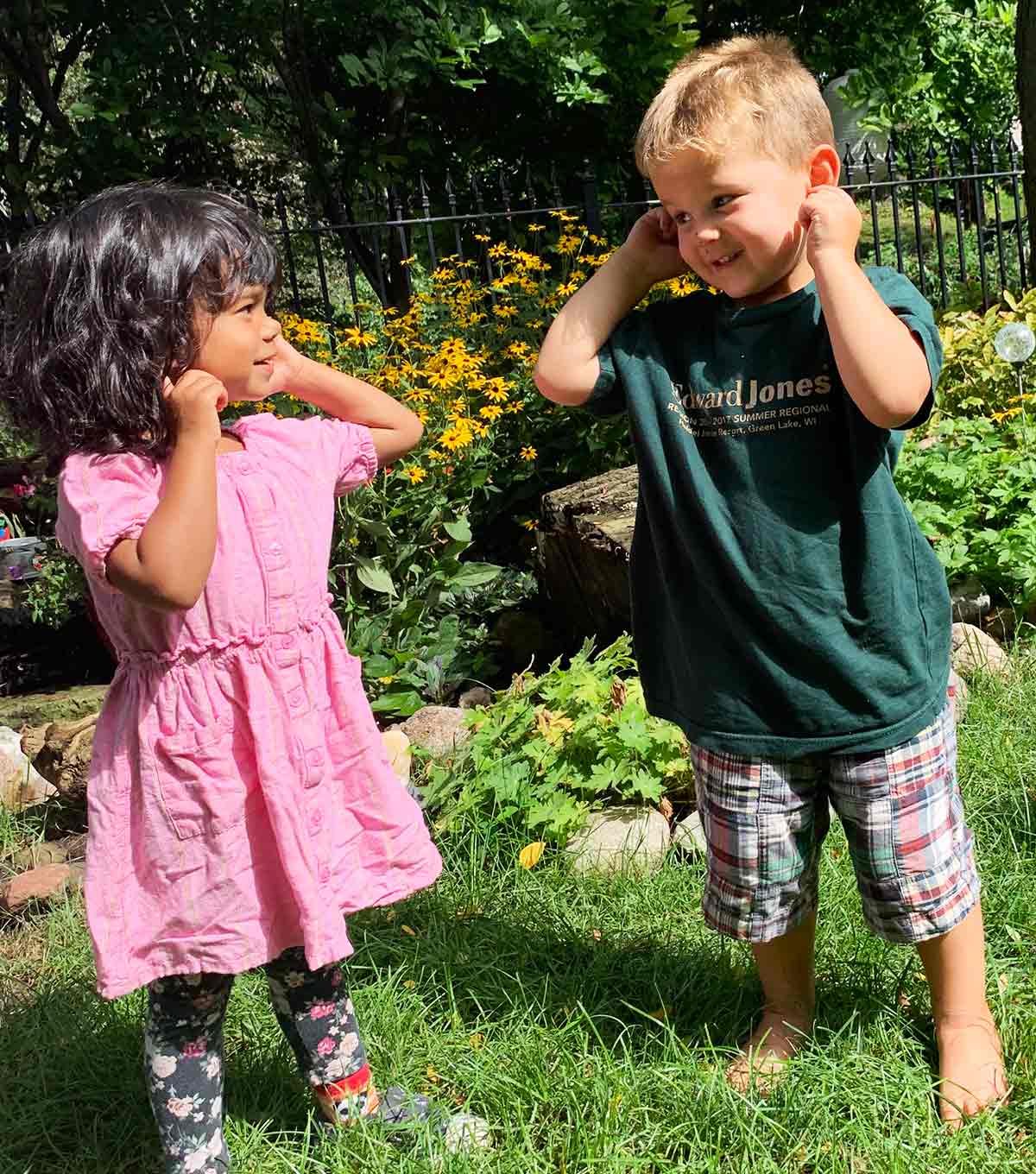Simon Says
Introduction
Looking for a simple, fun activity that fosters the development of listening, memorization and gross-motor skills, but doesn't require any special materials? Studies show that the classic children's game "Simon Says" does all of this and more. So let's get started to help your child develop all of the skills mentioned above while building impulse and emotional control, language skills and a better understanding of expectations.

Activity
"Simon Says" has been around for years, perhaps because it's such a great game for developing your child's listening skills.
Playing games that require children to listen carefully and follow directions will improve their concentration skills and lengthen their attention spans.
Start the game by standing in front of your child and giving commands such as:
“Simon says: Put your hands on your head.”
“Simon says: Touch your toes.”
Now give a command that does not begin with “Simon says” and see if your child still obeys the command.
Your child will need to pay close attention to distinguish between the two types of commands—and then exercise self-control to resist following the commands that do not begin with "Simon says."
After a while, you can switch things up a bit by letting your child give the commands.
If you really want to get your child's attention, you can switch it up and use your own name instead of "Simon."
Say: "Daddy says: Wiggle your nose." Then allow your child to use his or her own name when giving the commands.
The "Simon Says" game is also great for:
- Building body awareness: Say: "Simon says, touch your head."
- Counting practice: Say: "Simon says, clap three times."
- Gross-motor skill development: Say: "Simon says, do a jumping jack."
- Learning colors: Say: "Simon says, touch something red."
- Building body awareness: Say: "Simon says, put your hands on your hips."
- Crossing the midline: Say: "Simon says, give yourself a hug." (When children reach across the middle of the body from their right or left sides, they are using both sides of their brain to coordinate smooth, controlled, complex movement. This skill is important for activities that require a child to use both sides of the body at once, such as putting on shoes and socks, coloring and cutting.)
- Building social-emotional awareness: Say: "Simon says, make a sad face." Later, you can ask what makes your child sad, or what your child could do if a friend was sad.
Who knew that this beloved childhood game could promote your child's development in so many important ways?


